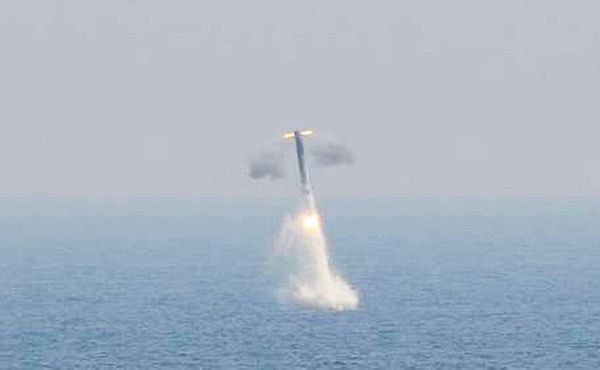WolfPack86
New Member
- Joined
- Oct 20, 2015
- Messages
- 10,571
- Likes
- 16,993
Navantia presents S80 Plus Submarine For India’s P-75I at Underwater Defence & Security 2020 Conference
Navantia is participating in the P75(I) project using as reference design our S80 plus, the only 3000 ton AIP submarine currently under construction worldwide. This baseline is very close to the requirements of the Indian Navy, possibly the closest among all shortlisted competitors, and meets the Indian ambition with minimum risk. For this reason, a technical effort at this stage is minimum and Navantia is focusing on other aspects such as the indigenization of major equipment and materials, and Transfer of Technology (ToT) opportunities.
More than 100 companies in India are already in contact with Navantia for the indigenization of equipment and materials, and around 200 are expected to participate in the event, which will be the forum for explaining areas of cooperation, and organizing one-to-one interviews. Key S80 Plus equipment suppliers shall also participate to explore indigenisation opportunities for components, or fabrication in India. All Indian suppliers are very welcome.
About India’s P-75I:
The Indian government shortlisted in January 2020 two Indian shipyards and five foreign defense companies for the P-75I project which calls for the local construction of six conventional submarines. The two local shipyards that were shortlisted are the privately owned L&T group and state-owned MDL. The five foreign defense companies are Daewoo Shipbuilding and Marine Engineering DSME (South Korea), Navantia (Spain), Naval Group (France), Rubin Design Bureau (Russia)and ThyssenKrupp Marine Systems TKMS (Germany).
About S-80 Plus-class submarine:
The S-80 Plus class is a Spanish class of four submarines in production by the Spanish company Navantia in its Cartagena shipyard for the Spanish Navy. In common with other contemporary submarines, they feature air-independent propulsion.
S-80 Plus-class submarines are designed to improve threat scenario missions. Their operational mobility will allow them to operate in remote areas, travelling discreetly at high speeds. Their air-independent propulsion (AIP) system, of new technological design, will ensure their ability to remain in an area for a very long period of time without being detected and their ability to operate in possible conflict zones.
In terms of specifications, the S-80 Plus-class submarines have a full load displacement of 3,200 tons, a total length of 81.05 m (265.9 ft), a beam of 11.68 m (38.3 ft) and a draught of 6.20 m (20.3 ft). With a cruising speed of 12 knots, the S-80 Plus-class submarines offer a range of 8,000 nm. The submarine can accommodate 32 personnel (plus 8 troops).
The S-80 Plus-class submarines are equipped with 6 × 533 mm torpedo tubes with DM2A4 torpedoes and Harpoon missiles.

Navantia is participating in the P75(I) project using as reference design our S80 plus, the only 3000 ton AIP submarine currently under construction worldwide. This baseline is very close to the requirements of the Indian Navy, possibly the closest among all shortlisted competitors, and meets the Indian ambition with minimum risk. For this reason, a technical effort at this stage is minimum and Navantia is focusing on other aspects such as the indigenization of major equipment and materials, and Transfer of Technology (ToT) opportunities.
More than 100 companies in India are already in contact with Navantia for the indigenization of equipment and materials, and around 200 are expected to participate in the event, which will be the forum for explaining areas of cooperation, and organizing one-to-one interviews. Key S80 Plus equipment suppliers shall also participate to explore indigenisation opportunities for components, or fabrication in India. All Indian suppliers are very welcome.
About India’s P-75I:
The Indian government shortlisted in January 2020 two Indian shipyards and five foreign defense companies for the P-75I project which calls for the local construction of six conventional submarines. The two local shipyards that were shortlisted are the privately owned L&T group and state-owned MDL. The five foreign defense companies are Daewoo Shipbuilding and Marine Engineering DSME (South Korea), Navantia (Spain), Naval Group (France), Rubin Design Bureau (Russia)and ThyssenKrupp Marine Systems TKMS (Germany).
About S-80 Plus-class submarine:
The S-80 Plus class is a Spanish class of four submarines in production by the Spanish company Navantia in its Cartagena shipyard for the Spanish Navy. In common with other contemporary submarines, they feature air-independent propulsion.
S-80 Plus-class submarines are designed to improve threat scenario missions. Their operational mobility will allow them to operate in remote areas, travelling discreetly at high speeds. Their air-independent propulsion (AIP) system, of new technological design, will ensure their ability to remain in an area for a very long period of time without being detected and their ability to operate in possible conflict zones.
In terms of specifications, the S-80 Plus-class submarines have a full load displacement of 3,200 tons, a total length of 81.05 m (265.9 ft), a beam of 11.68 m (38.3 ft) and a draught of 6.20 m (20.3 ft). With a cruising speed of 12 knots, the S-80 Plus-class submarines offer a range of 8,000 nm. The submarine can accommodate 32 personnel (plus 8 troops).
The S-80 Plus-class submarines are equipped with 6 × 533 mm torpedo tubes with DM2A4 torpedoes and Harpoon missiles.

Navantia presents S80 Plus Submarine For India’s P-75I at Underwater Defence & Security 2020 Conference
Navantia is participating in the P75(I) project using as reference design our S80 plus, the only 3000 ton AIP submarine currently under construction worldwide. This baseline is very close to the requirements of the Indian Navy, possibly the closest among all shortlisted competitors, and meets...
www.defencenews.in





